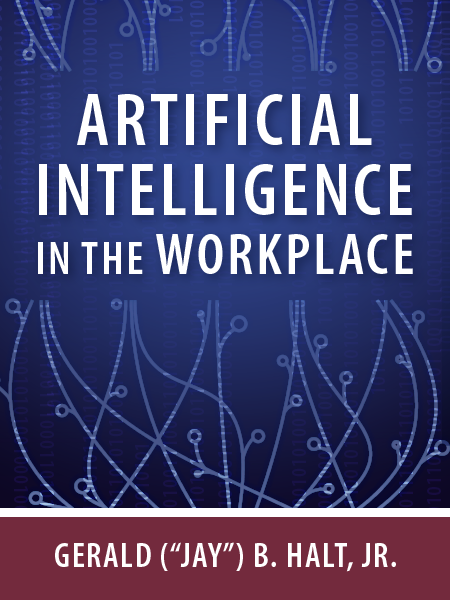
The workplace has evolved greatly over the last few decades. With the continuous introduction of technology, the advent of social media, and the transition of the workforce from the baby boomers to subsequent generations of workers, the pace of change has been rapid. These changes have been accelerated thanks largely to the Covid-19 pandemic. Remote work has become commonplace, with remote screening and hiring also becoming the norm. The use of artificial intelligence (AI) is not new to the workplace. It has been used to filter resumes and scan social media profiles of potential candidates. However, the pandemic and resultant remote workforce have acted as an impetus for further implementation of AI workplace tools. While there is no doubt that AI has the potential to add immense value to the workplace, the implementation of AI can raise important legal questions.
AI has become a trendy technology buzzword, but the technology is not difficult to conceptually understand. Before an AI system is used, the system is “trained” by using a basic data set. Using a machine learning algorithm, a computer system processes a training data set and “learns” how to optimize the results over time. As the AI processes this initial data, it learns which parameters of the data it can adjust to obtain a desired output, and how the system should process new data in order to optimize the output going forward. Because of this, an AI system is only as good as the data set that is used to train the algorithm. If the training data is skewed, for example by being racially biased, the output of the AI system will likewise be biased. Ensuring the AI is producing optimal (and non-discriminatory) results is crucial when implementing an AI system.1
AI for screening and hiring
The most notable AI workplace application is in the screening and investigating of potential candidates for a position. AI systems filter resumes to screen and rank potential candidates and scan the internet to perform background checks for finalists. Manually screening hundreds of applicants can take dozens of hours and be subject to the biases of the personnel doing the screening. AI capable of performing those actions at a fraction of the cost presents an attractive alternative. Additionally, AI-based screening, as compared to traditional screening, even shows potential for improving candidate placement by matching applicants with roles best designed for their skill sets.2 More advanced AI applications can review video interviews, analyzing vocal tones, body language, and candidate responses, to generate interview reports and selection recommendations.3
As with the introduction of any new tool into the workplace, implementation of AI in a human resource context also comes with potential downsides. Relying on an AI algorithm or any computerized screening system for candidate selection comes with the side effect of losing immediate reviewability by a human. Many potential candidates are now aware that unsophisticated automated systems for screening resumes depend upon “keyword” searches, and they revise their resumes to conform as closely as possible to the job posting. This leads to the AI system selecting resumes that are closely tailored to the job description and rejecting resumes for candidates who may actually be a better fit but do not know how automated resume scanning systems work. Although newer screening systems implementing more sophisticated AI algorithms overcome some of these prior limitations, the AI selections are ultimately only as good as the algorithms behind them. As a result, AI screening could unknowingly be selecting less-qualified candidates based on improper or unimportant parameters, or not selecting candidates that would be a superior fit for the position. To take it a step further, AI screening implicates compliance concerns and may even open an employer to discrimination liability.
Background on discrimination claims
The most notable pieces of antidiscrimination legislation are Title VII of the Civil Rights Act of 1964, the Americans with Disabilities Act, and the Age Discrimination Act, which prevent employer discrimination against employees based on race, color, national origin, sex, religion, and age. Potential causes of action stemming from Title VII include claims for disparate treatment and disparate impact.
Disparate treatment claims involve the intent of the employer to discriminate, and courts utilize the McDonnell Douglas Corp. v. Green framework as the basic form of analysis for a claim.4 First, the plaintiff must present a prima facie case that: (i) they are a member of a protected class; (ii) they were qualified for and applied for an open position; (iii) despite being qualified, they were rejected for the position; and (iv) the position remained available after their rejection. Next, the burden shifts to the employer to show a legitimate non-discriminatory reason for the action. Finally, the plaintiff must demonstrate the stated reason was a pretext for the discrimination.5
Disparate impact claims, on the other hand, do not require an intent to discriminate and can be based on statistics that show a protected class being disproportionately screened out.6

CLICK HERE to read the full article, which was originally published in ALI CLE’s The Practical Real Estate Lawyer.
The Practical Real Estate Lawyer
Subscribe to the print or digital version of The Practical Real Estate Lawyer today.
